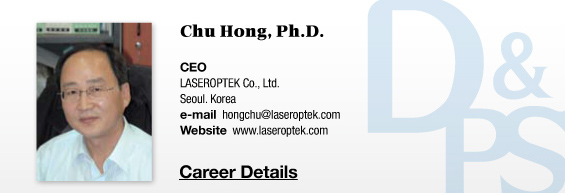Treatment of pigment particles or cell organs using light irradiation does not require accurate aiming as lesions have unique optical and thermal properties. It may sound complicated and strange but the core concept to remember is that a specific wavelength should be used for a specific target and the pulse duration of the light source should be shorter than the TRT (thermal relaxation time) of the target area to minimize thermal damage (burn).
This theory is currently a key principle that all medical laser manufacturers must follow in developing their products
As shown in <Table 1>, Er: fiber laser was invented in the 1980s and it is still widely used in medicine. The purpose of developing laser at the time was mainly to allow long-distance optical communications. In other words, laser was installed along the optical cables to amplify weakened signals. Laser is still most extensively used in signal amplification in optical communications. In the field of dermatology, this type of laser was developed in the trade name of Fraxel and has been very popular in aesthetic dermatology since the mid 2000s. Fraxel is based on the therapeutic principle of selective photothermolysis.

Table 1. Lasers developed in the1980s.
In 1983, the first laser Anderson used to demonstrate a new method that allows selective treatment of pigmentation lesions or vascular lesions while leaving the healthy tissues undamaged was the flash lamp pumped pulsed dye laser. Dye laser has a wide gain bandwidth that determines the oscillation wavelength, which allows wavelength turning in a wide range and selection of the right wavelength for the lesion type. Moreover, flash lamp pumping of laser produces higher energy compared to other lasers (argon, nitrogen, excimer, and 532nm lasers, etc.), making it an ideal choice to demonstrate the theory of selective photothermolysis. Anderson was able to prove in his paper that adequately adjusting the wavelength, pulse duration and pulse energy of a dye laser with the above properties can selectively and effectively treat pigmented or vascular lesions. His paper led to revision of specifications of all lasers used previous to his paper according to the theory of selective photothermolysis.
His theory also served as the scientific basis of developing safe and efficacious laser devices for treating pigmented lesions, vascular lesions as well as for hair removal and epilation. The first laser manufactured according to the theory of selective photothermolysis was pulsed dye laser (577-585nm) indicated for pigmented lesions. A dye laser can be manufactured to have long pulse duration (450us) and large beam size. Using such properties allows removal of hypertrophic scar, a common complication of previous argon laser therapy. This also allowed use of laser in vascular lesions of children under 12 years of age, which had been a contraindication in this age group.
HELIOSⅡ/LOTUSⅡ/HYPERION – Manufacturer: LASEROPTEK(www.laseroptek.com)
-To be continued-





















